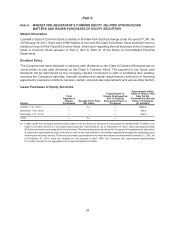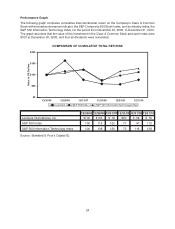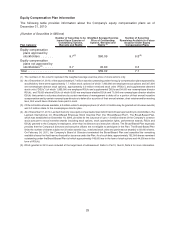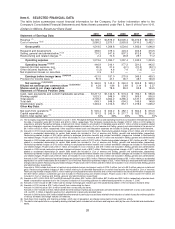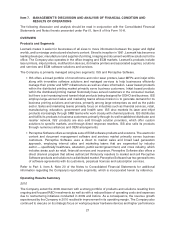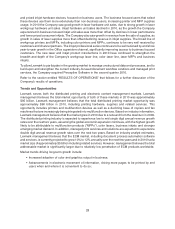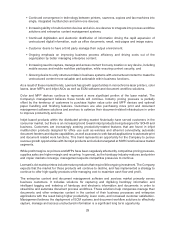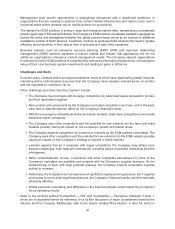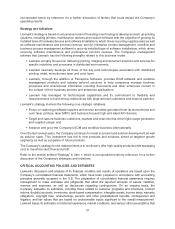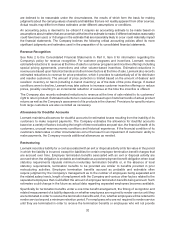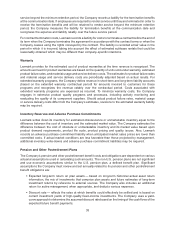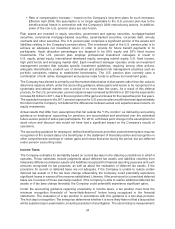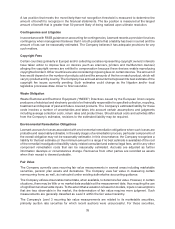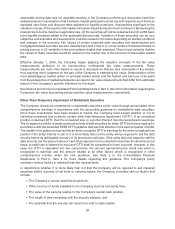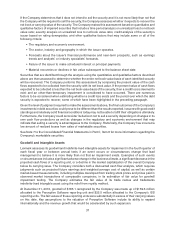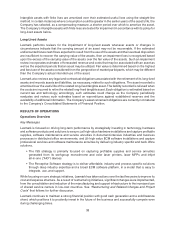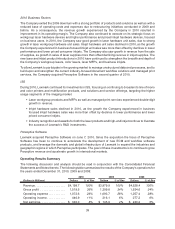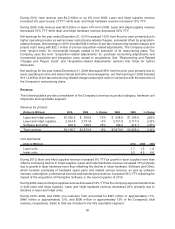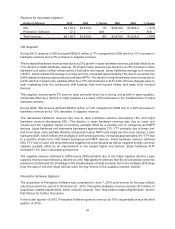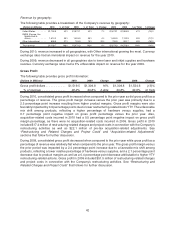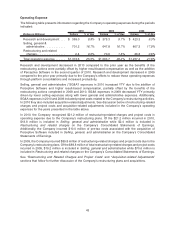Lexmark 2010 Annual Report Download - page 39
Download and view the complete annual report
Please find page 39 of the 2010 Lexmark annual report below. You can navigate through the pages in the report by either clicking on the pages listed below, or by using the keyword search tool below to find specific information within the annual report.service beyond the minimum retention period, the Company records a liability for the termination benefits
at the communication date. If employees are required to render service until they are terminated in order to
receive the termination benefits and will be retained to render service beyond the minimum retention
period, the Company measures the liability for termination benefits at the communication date and
recognizes the expense and liability ratably over the future service period.
For contract termination costs, Lexmark records a liability for costs to terminate a contract before the end of
its term when the Company terminates the agreement in accordance with the contract terms or when the
Company ceases using the rights conveyed by the contract. The liability is recorded at fair value in the
period in which it is incurred, taking into account the effect of estimated sublease rentals that could be
reasonably obtained which may be different than company-specific intentions.
Warranty
Lexmark provides for the estimated cost of product warranties at the time revenue is recognized. The
amounts accrued for product warranties are based on the quantity of units sold under warranty, estimated
product failure rates, and material usage and service delivery costs. The estimates for product failure rates
and material usage and service delivery costs are periodically adjusted based on actual results. For
extended warranty programs, the Company defers revenue in short-term and long-term liability accounts
(based on the extended warranty contractual period) for amounts invoiced to customers for these
programs and recognizes the revenue ratably over the contractual period. Costs associated with
extended warranty programs are expensed as incurred. To minimize warranty costs, the Company
engages in extensive product quality programs and processes, including actively monitoring and
evaluating the quality of its component suppliers. Should actual product failure rates, material usage
or service delivery costs differ from the Company’s estimates, revisions to the estimated warranty liability
may be required.
Inventory Reserves and Adverse Purchase Commitments
Lexmark writes down its inventory for estimated obsolescence or unmarketable inventory equal to the
difference between the cost of inventory and the estimated market value. The Company estimates the
difference between the cost of obsolete or unmarketable inventory and its market value based upon
product demand requirements, product life cycle, product pricing and quality issues. Also, Lexmark
records an adverse purchase commitment liability when anticipated market sales prices are lower than
committed costs. If actual market conditions are less favorable than those projected by management,
additional inventory write-downs and adverse purchase commitment liabilities may be required.
Pension and Other Postretirement Plans
The Company’s pension and other postretirement benefit costs and obligations are dependent on various
actuarial assumptions used in calculating such amounts. The non-U.S. pension plans are not significant
and use economic assumptions similar to the U.S. pension plan, a defined benefit plan. Significant
assumptions the Company must review and set annually related to its pension and other postretirement
benefit obligations are:
• Expected long-term return on plan assets — based on long-term historical actual asset return
information, the mix of investments that comprise plan assets and future estimates of long-term
investment returns by reference to external sources. The Company also includes an additional
return for active management, when appropriate, and deducts various expenses.
• Discount rate — reflects the rates at which benefits could effectively be settled and is based on
current investment yields of high-quality fixed-income investments. The Company uses a yield-
curve approach to determine the assumed discount rate based on the timing of the cash flows of the
expected future benefit payments.
33


